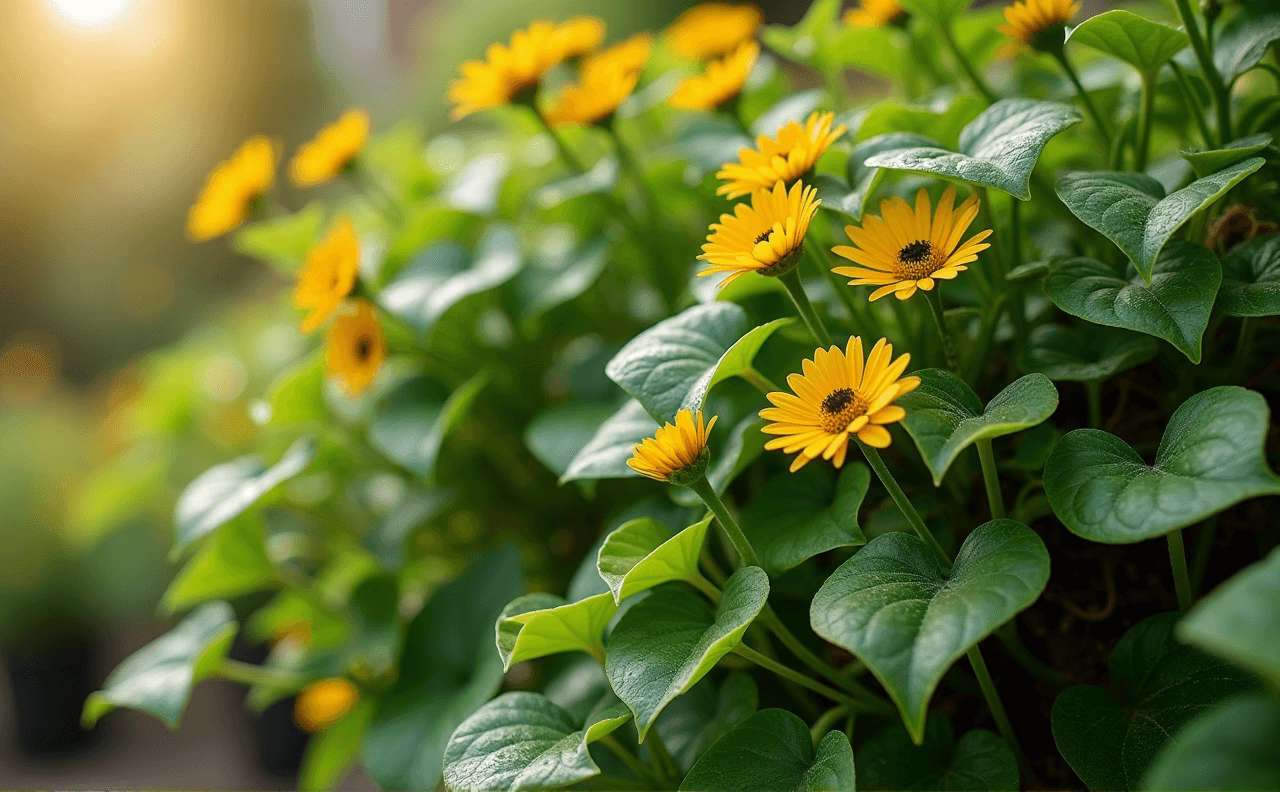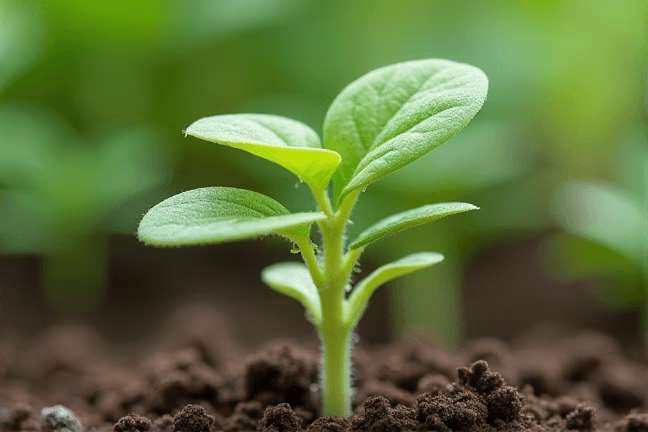
German Ivy
Senecio mikanioides
Grow Time
60-90 days
Sunlight
Partial Shade to Full Sun
Watering
Every 5-7 days
Toxicity
Mildly toxic
How to plant German Ivy: Step-by-Step Guide
Growing Guide
Preparation
What you'll need:

A pot with drainage holes (6-8 inches wide is good to start)

Lightweight potting mix (regular indoor potting soil works fine, but make sure it drains well)

Watering can
- A cutting or young German Ivy plant (you can find this at garden centers or even take a healthy cutting from a friend’s plant)
- A bright spot in your home or garden
When to start:
German Ivy grows best when the weather is warm, so spring or early summer is ideal for planting. If you're keeping it indoors, you can start anytime, as long as you have a sunny spot.
Choosing a location:
German Ivy loves light, but not harsh direct sunlight. Find a spot that gets bright, indirect light—like near a window with filtered sunlight. If you’re planting it outdoors, choose a shaded or partially shaded area where it won’t get too much afternoon sun.
Planting

If you have a cutting:
- Take a 4-6 inch cutting from a healthy stem, making sure it has a few leaves.
- Remove the lower leaves, leaving just a couple at the top.
- Place the cutting in a glass of water or directly into moist soil.
- If using water, wait until roots develop (this usually takes 1-2 weeks), then transfer the cutting to a pot with soil.
- Gently press the soil around the base of the cutting to keep it upright.
If you have a young plant:
- Fill your pot with potting soil, leaving about an inch of space at the top.
- Dig a small hole and place the root ball of the plant inside.
- Cover the roots with soil and gently pat down to secure the plant.
- Water lightly to help the plant settle in.
Tip: Don’t bury the stem too deep! Just cover the roots and keep the leaves above the soil.
Growing Care
Watering:
- Water when the top inch of soil feels dry to the touch. Stick your finger in—if it’s dry, it’s time to water!
- Water thoroughly, but make sure the pot has good drainage so the roots don’t sit in soggy soil.
- In winter, water less often since the plant will grow more slowly.
Light:
- Keep your German Ivy in bright, indirect light. Too much direct sun can burn the leaves, but too little light will make it leggy.
- If you notice the plant stretching toward the light, it might need more brightness.
Fertilizer:
- During the growing season (spring and summer), give your plant a bit of balanced houseplant fertilizer every 4-6 weeks.
- In fall and winter, you can stop fertilizing since the plant isn’t growing as actively.
Pruning:
- Trim back any long or straggly stems to encourage bushier growth. You can use these cuttings to propagate new plants!
- Regular pruning also helps keep the plant looking neat and tidy.
Harvesting

German Ivy isn’t a plant you harvest like vegetables or herbs, but it does produce lovely foliage that you can enjoy year-round! Plus, you can regularly trim it to shape the plant or propagate new ones from the cuttings.
Propagation Tip:
- Whenever you prune, save the healthy cuttings and root them in water or soil to grow more plants. This way, you’ll always have fresh German Ivy to share or replant!
Plant Care FAQ
Q: Why are my German Ivy’s leaves turning yellow?
A: Yellow leaves usually mean overwatering. Make sure the soil isn’t staying too wet. Let it dry out a bit between waterings.
Q: Can German Ivy survive outside?
A: Yes, but only in warmer climates. It prefers temperatures above 50°F (10°C). If you live in a colder area, it’s better as an indoor plant or bring it inside during winter.
Q: My plant is getting leggy. What should I do?
A: Leggy growth means it’s not getting enough light. Move it closer to a brighter window or provide some artificial light. Also, regular pruning encourages fuller growth.
Q: Is German Ivy safe around pets?
A: Unfortunately, no. German Ivy is toxic to cats and dogs if ingested, so keep it out of reach if you have curious pets.
Q: How fast does German Ivy grow?
A: It grows fairly quickly in the right conditions, especially in spring and summer. With proper care, it can spread and trail beautifully within a few months.
Pro Tips
1. Hanging Baskets
German Ivy looks stunning in hanging baskets because its trailing vines can cascade beautifully. Perfect for brightening up your living space!2. Rotate for Even Growth
Every week or so, rotate your plant slightly to ensure all sides get equal light. This prevents it from leaning too much in one direction.3. Humidity Boost
If the air in your home is dry, mist the leaves occasionally or place the pot on a tray with pebbles and water to increase humidity.4. Watch for Pests
Keep an eye out for common pests like spider mites or aphids. If you see any, gently wash the leaves with soapy water or use an organic insecticide.5. Easy Propagation
German Ivy roots easily in water. Save those cuttings after pruning and gift rooted plants to friends—it’s a great way to share your green thumb!6. Avoid Cold Drafts
Keep your plant away from drafty windows or doors, especially in winter. Sudden temperature drops can stress the plant.7. Train it Up!
While German Ivy naturally trails, you can train it to climb a trellis or moss pole for a different look. Just guide the stems and secure them with soft ties.